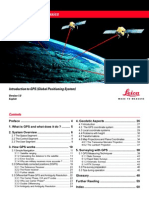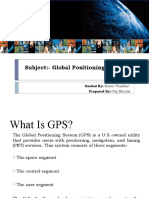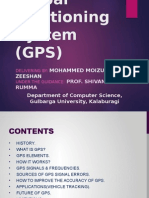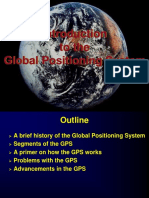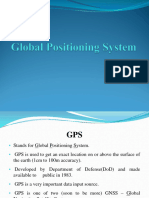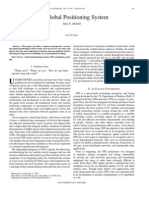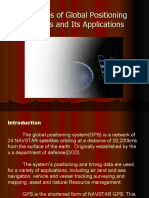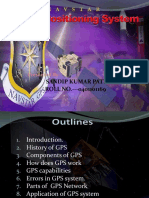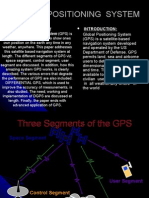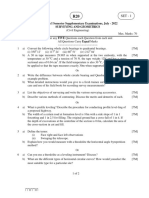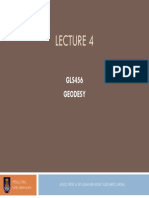0% found this document useful (0 votes)
14 views18 pagesWeek-1 Module-5 NAVSTR-itioning System
The document provides a comprehensive overview of the Global Positioning System (GPS), detailing its history, structure, and applications. GPS, developed by the U.S. Department of Defense, consists of a constellation of 24 satellites that enable accurate global navigation and positioning for both military and civilian use. Recent advancements include modernization efforts to enhance signal accuracy and reliability, including the introduction of new frequencies for improved navigation services.
Uploaded by
dpurohit0210Copyright
© © All Rights Reserved
We take content rights seriously. If you suspect this is your content, claim it here.
Available Formats
Download as PDF, TXT or read online on Scribd
0% found this document useful (0 votes)
14 views18 pagesWeek-1 Module-5 NAVSTR-itioning System
The document provides a comprehensive overview of the Global Positioning System (GPS), detailing its history, structure, and applications. GPS, developed by the U.S. Department of Defense, consists of a constellation of 24 satellites that enable accurate global navigation and positioning for both military and civilian use. Recent advancements include modernization efforts to enhance signal accuracy and reliability, including the introduction of new frequencies for improved navigation services.
Uploaded by
dpurohit0210Copyright
© © All Rights Reserved
We take content rights seriously. If you suspect this is your content, claim it here.
Available Formats
Download as PDF, TXT or read online on Scribd
/ 18








